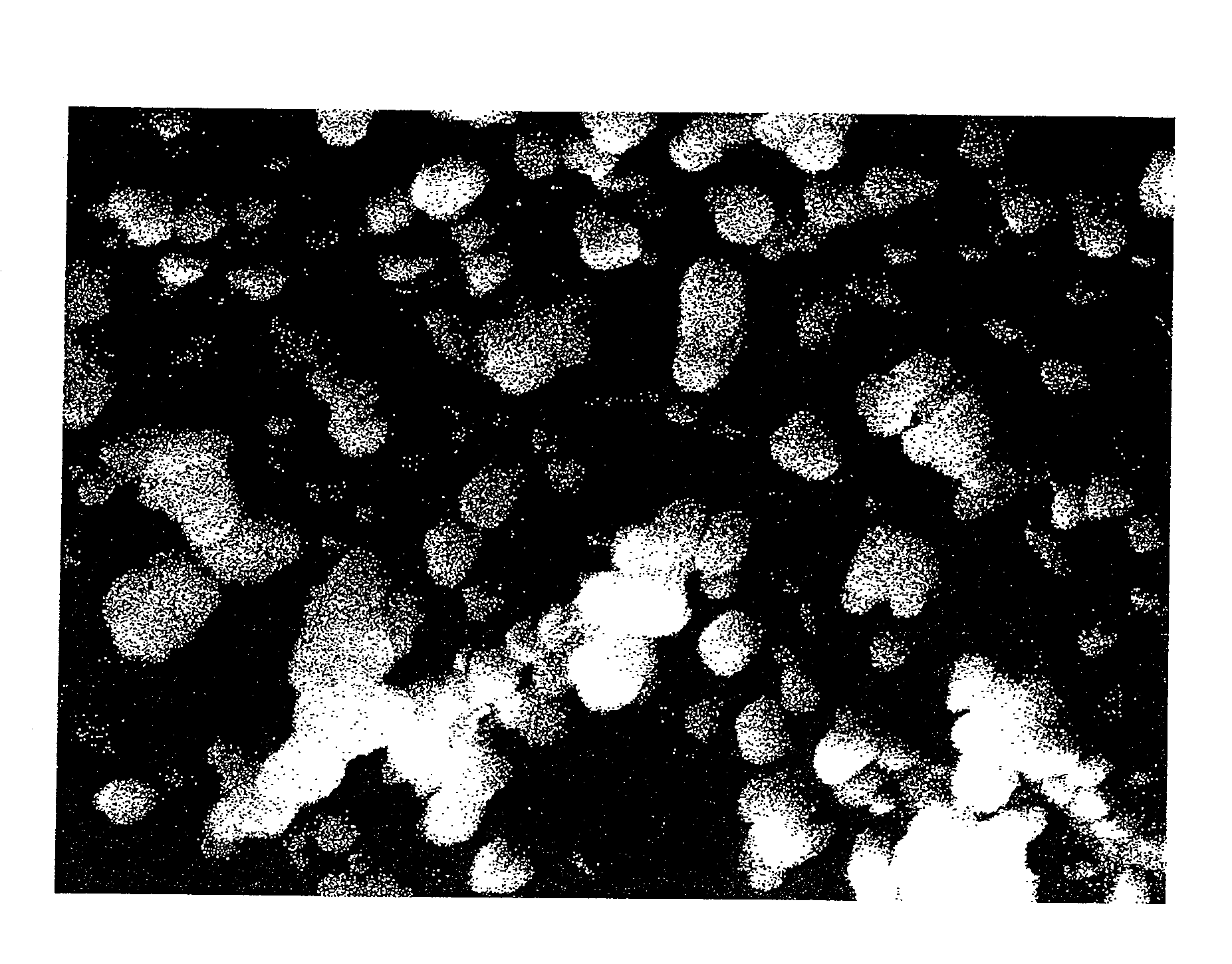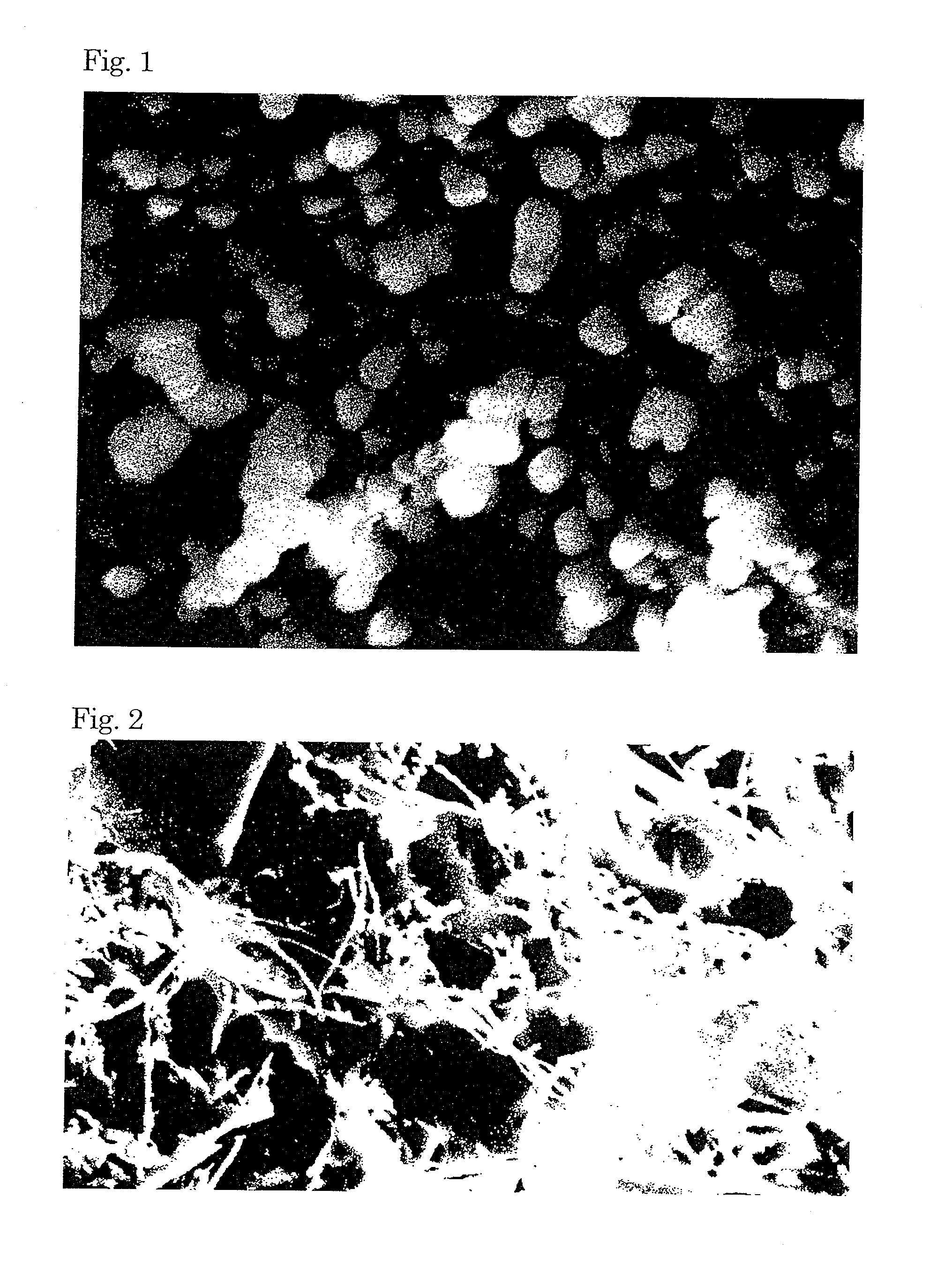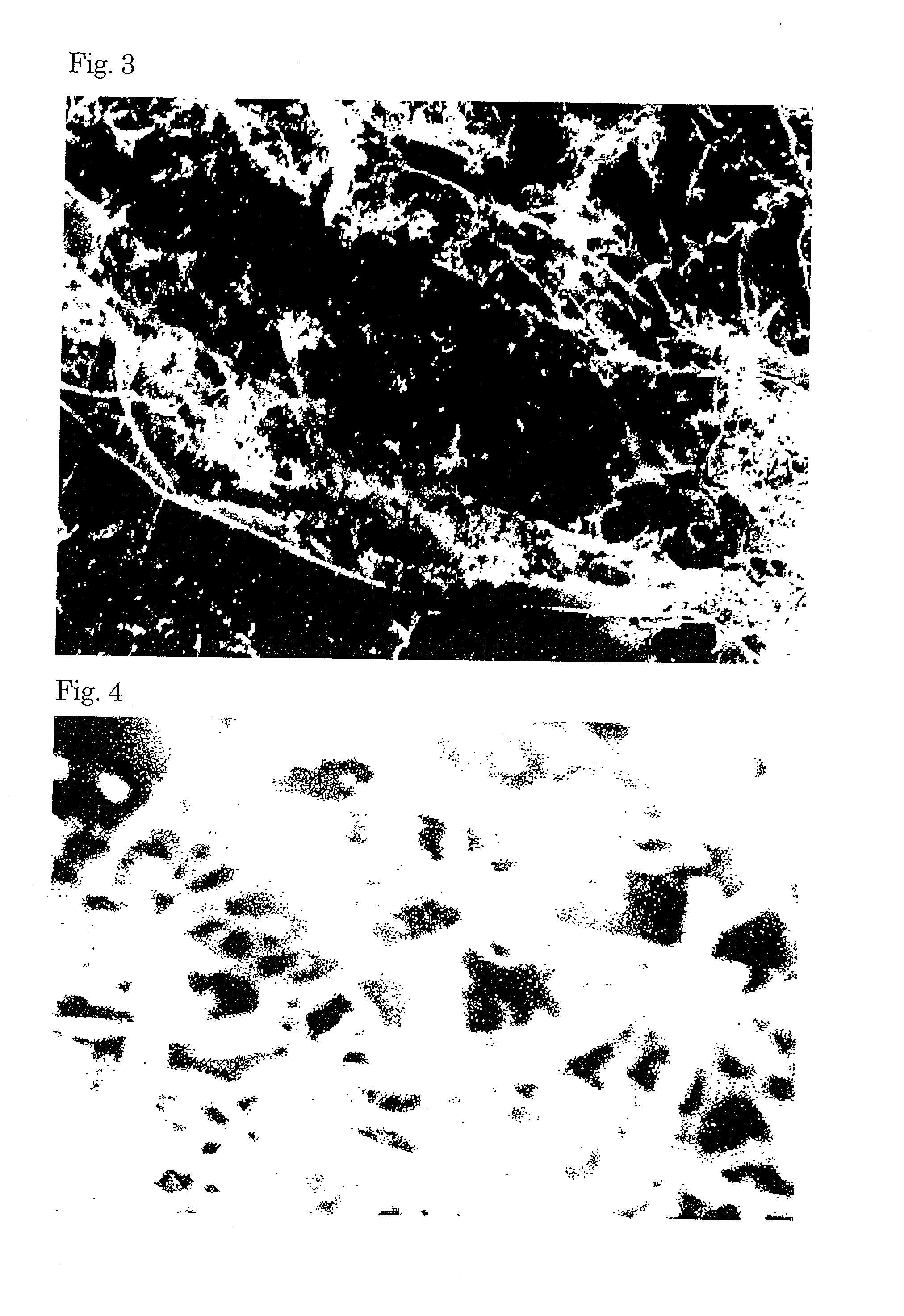Organic inorganic composite powder, method of producing the same, and composition containing the powder
a technology of composite powder and inorganic powder, which is applied in the field of organic inorganic powder composite powder, can solve the problems of inability to obtain very fine particles, inability to re-dispersion in water having a high polarity, and inability to achieve very fine particles, etc., and achieves the effect of easy dispersion in water
- Summary
- Abstract
- Description
- Claims
- Application Information
AI Technical Summary
Benefits of technology
Problems solved by technology
Method used
Image
Examples
example 1
[0118]Zinc nitrate hexahydrate (18 g) and acrylic acid (1 g) were dissolved in a mixed solvent of methanol (134 g) and water (41 g), to thereby prepare Liquid A. 3 N caustic soda (56 g) was gradually introduced into Liquid A under stirring at room temperature, and the whole was heated immediately after a total amount was introduced. After the temperature had reached 50° C., azobisisobutyronitrile (0.02 g) was added. The resultant was continuously heated, maintained at a reflux temperature for 1 hour, and cooled. After cooling, an operation of decantation and filtration by using water was repeated three times, and an obtained precipitate was dried at 90° C. for 4 hours, to thereby obtain a dried product (5.2 g). 95% of the dried product was wurzite zinc oxide. That is, the precipitate was a composite (Composite 1a) of fine particle zinc oxide and acrylic acid containing 95 mass % of spherical fine particle zinc oxide and 5 mass % of polyacrylic acid. Zinc oxide had a spherical shape ...
example 2
[0119]Zinc chloride (9 g) and polyacrylic acid (degree of polymerization of 5,000) (2 g) were dissolved in a mixed solvent of ethanol (116 g) and water (91 g), to thereby prepare Liquid A. 6 N caustic soda (31 g) was gradually introduced into Liquid A under stirring at room temperature, and the whole was heated 20 minutes after from a total amount was introduced, maintained at a reflux temperature for 1 hour, and cooled. After cooling, an operation of decantation and filtration by using water was repeated three times, and an obtained precipitate was dried at 90° C. for 4 hours, to thereby obtain a dried product (5.9 g). 85% of the dried product was wurzite zinc oxide.
example 3
[0120]Iron chloride (10 g) and methyl methacrylic acid (2.3 g) were dissolved in a mixed solvent of ethoxyethanol (116 g) and water (140 g), to thereby prepare Liquid A. 6 N caustic soda (37 g) was gradually introduced into Liquid A under stirring at room temperature, and the whole was heated immediately after a total amount was introduced. After the temperature had reached 50° C., azobisisobutyronitrile (0.04 g) was added. The resultant was continuously heated, maintained at a reflux temperature for 1 hour, and cooled. After cooling, an operation of decantation and filtration by using water was repeated three times, and an obtained precipitate was dried at 90° C. for 4 hours, to thereby obtain a dried product (5.6 g). 75% of the dried product was Fe2O3 type iron oxide.
PUM
| Property | Measurement | Unit |
|---|---|---|
| particle size | aaaaa | aaaaa |
| transmission light wavelength | aaaaa | aaaaa |
| particle size | aaaaa | aaaaa |
Abstract
Description
Claims
Application Information
 Login to View More
Login to View More - R&D
- Intellectual Property
- Life Sciences
- Materials
- Tech Scout
- Unparalleled Data Quality
- Higher Quality Content
- 60% Fewer Hallucinations
Browse by: Latest US Patents, China's latest patents, Technical Efficacy Thesaurus, Application Domain, Technology Topic, Popular Technical Reports.
© 2025 PatSnap. All rights reserved.Legal|Privacy policy|Modern Slavery Act Transparency Statement|Sitemap|About US| Contact US: help@patsnap.com



